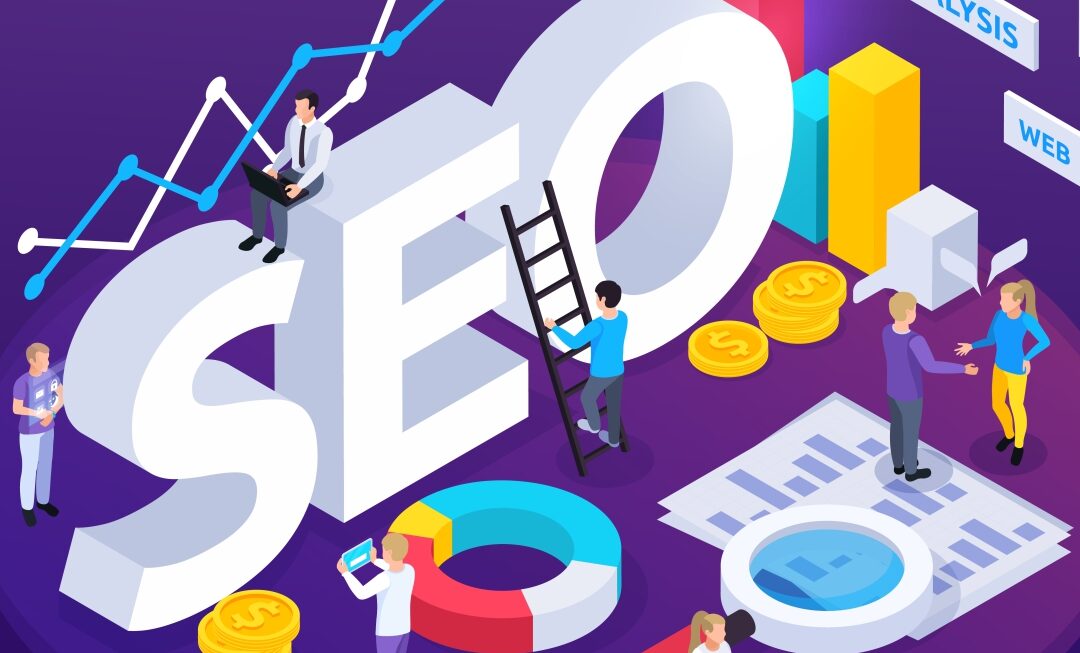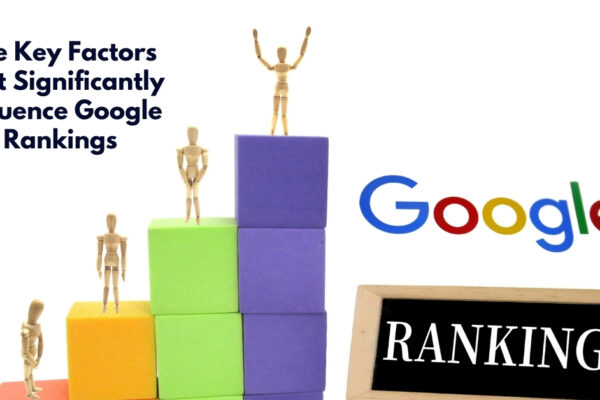SEO (Search Engine Optimization) is the process of improving the quality and quantity of website traffic to a website or web page from search engine results pages (SERPs). Search engines are websites that search the World Wide Web for information related to a specific keyword or phrase. When a user enters a keyword or phrase into a search engine, the search engine returns a list of websites that are relevant to the search query. The higher a website ranks in the SERPs, the more likely it is to be visited by users.
SEO is important because it can help businesses to:
· Increase website traffic
There are many ways to increase website traffic, but some of the most effective methods include:
Search engine optimization (SEO): SEO is the process of optimizing your website and its content so that it ranks higher in search engine results pages (SERPs). This can lead to more organic traffic, which is traffic that comes from people searching for relevant keywords online.
Content marketing: Content marketing involves creating and distributing valuable, relevant, and consistent content to attract and retain a clearly defined audience and drive profitable customer action. This type of content can include blog posts, articles, infographics, videos, and more.
Social media marketing: Social media marketing involves using social media platforms like Facebook, Twitter, and LinkedIn to connect with your target audience and promote your website and content.
Pay-per-click (PPC) advertising: PPC advertising allows you to place ads at the top of SERPs for specific keywords. When someone clicks on your ad, you pay a fee to the search engine.
Email marketing: Email marketing involves collecting email addresses from potential customers and sending them regular email newsletters with updates about your company, products, or services.
The best way to increase website traffic will vary depending on your specific business and goals. However, by implementing a combination of the methods listed above, you can start to see a significant increase in traffic to your website.
Here are some additional tips for increasing website traffic from Best SEO Company India:
Make sure your website is user-friendly and easy to navigate.
Publish high-quality content regularly.
Promote your content on social media and other online platforms.
Run contests and giveaways to attract new visitors.
Offer discounts and promotions to encourage people to sign up for your email list.
Use analytics tools to track your website traffic and identify areas for improvement.
Increasing website traffic takes time and effort, but it is a worthwhile investment. By driving more traffic to your website, you can generate more leads, sales, and revenue for your business.
· Generate leads and sales
There are many ways to generate leads and sales for your business, but some of the most effective methods include:
Creating high-quality content that is relevant to your target audience. This content can be in the form of blog posts, articles, infographics, videos, and more. When you create valuable content, you attract people to your website who are interested in what you have to offer.
Using search engine optimization (SEO) to improve your website’s ranking in search results pages (SERPs). This will make it more likely that people will find your website when they search for relevant keywords online.
Running paid advertising campaigns on platforms like Google Ads and Facebook Ads. This can be a very effective way to reach a large audience and drive traffic to your website.
Using social media to connect with your target audience and promote your products or services. Social media platforms like Facebook, Twitter, and LinkedIn can be a great way to build relationships with potential customers and generate leads.
Offering free trials or demos of your products or services. This is a great way to give potential customers a chance to try your product or service before they buy it.
Create a lead magnet, such as an e-book or white paper, that you can offer potential customers in exchange for their contact information. This is a great way to build your email list and generate leads.
Nurturing your leads by sending them regular email newsletters with valuable content and offers. This will help to keep them engaged and interested in your products or services.
Following up with leads promptly and professionally. When a lead contacts you, be sure to follow up with them as soon as possible to answer their questions and address their needs.
By implementing a combination of these methods, you can generate more leads and sales for your business.
Here are some additional tips for generating leads and sales:
Make sure your website is optimized for conversions. This means having clear calls to action on every page and making it easy for visitors to contact you or sign up for your email list.
Segment your leads and target them with personalized messages. This will help to make your marketing more effective and increase your conversion rates.
Use lead scoring to prioritize your leads. This will help you to focus your efforts on the leads that are most likely to convert into customers.
Use a CRM (customer relationship management) system to track your leads and sales opportunities. This will help you to stay organized and manage your leads more effectively.
Analyze your results and make adjustments to your strategy as needed. It’s important to track your results and see what’s working and what’s not. This will help you to improve your lead generation and sales process over time.
Generating leads and sales takes time and effort, but it is a worthwhile investment. By following the tips above, you can start to generate more leads and sales for your business.
There are two main types of SEO: on-page SEO and off-page SEO.
1. On-page SEO refers to the optimization of the website itself, including the content, structure, and code. On-page SEO factors include:
· Keyword usage
Keyword usage is the process of using relevant keywords throughout your website content in a way that is natural and informative. This helps to improve your website’s visibility in search engine results pages (SERPs) and makes it more likely that people will find your website when they search for relevant keywords online.
When choosing keywords to target, it is important to consider the following factors:
Search volume: How many people are searching for the keyword each month?
Competition: How difficult is it to rank for the keyword in SERPs?
Relevance: How relevant is the keyword to your business and website content?
It is also important to use your keywords in a variety of places on your website, including:
Page titles and meta descriptions: These elements appear in SERPs and are clickable, so it is important to include your keywords in them.
Headings and subheadings: Headings and subheadings break up your text and make it easier to read. They are also important for SEO, so include your keywords in them as well.
Body text: Your body text should be informative and engaging, and it should also include your keywords throughout.
Image file names and alt text: Image file names and alt text are used by search engines to index your images. Include your keywords in these elements to help improve your website’s visibility for image searches.
It is important to avoid keyword stuffing, which is the practice of overusing keywords in your content in a way that is unnatural and spammy. Keyword stuffing can hurt your website’s ranking in SERPs, so it is important to use keywords in moderation.
Here are some additional tips for keyword usage:
Use long-tail keywords: Long-tail keywords are more specific and less competitive than short-tail keywords. This means that they are easier to rank for and can be more effective for driving traffic to your website.
Use LSI keywords: LSI (latent semantic indexing) keywords are related to your primary keywords and can help to improve your website’s ranking in SERPs. For example, if your primary keyword is “shoes,” some LSI keywords could include “sneakers,” “boots,” and “sandals.”
Naturally, use keywords: Don’t force keywords into your content in a way that is unnatural or spammy. Your content should be informative and engaging, and it should flow naturally.
Use keywords throughout your website: Don’t just use keywords on your homepage. Use them throughout your website, including on your blog posts, product pages, and category pages.
By following these tips, you can improve your keyword usage and attract more visitors to your website.
· Title tags and meta descriptions
Title tags and meta descriptions are two important HTML elements that can help improve your website’s search engine optimization (SEO).
Title tags are the clickable headlines that appear in search engine results pages (SERPs). They should be concise and accurately reflect the content of the page they are associated with. Title tags should also include relevant keywords, as this can help to improve your website’s ranking in SERPs.
Meta descriptions are the brief snippets of text that appear below title tags in SERPs. They should provide a more detailed overview of the page’s content and be enticing enough to encourage users to click on the link. Meta descriptions should also include relevant keywords, but it is important to avoid keyword stuffing, as this can hurt your website’s ranking.
Here are some tips for writing effective title tags and meta descriptions:
Keep title tags to 50-60 characters and meta descriptions to 150-160 characters. This ensures that your entire title tag and meta description will be displayed in SERPs.
Use clear and concise language. Avoid using jargon or technical terms that your target audience may not understand.
Include relevant keywords in your title tags and meta descriptions, but avoid keyword stuffing. Your title tags and meta descriptions should be informative and engaging, and they should flow naturally.
Make your title tags and meta descriptions unique for each page of your website. This will help to distinguish your pages from each other in SERPs.
Here are some examples of effective title tags and meta descriptions:
Title tag: Best Shoes for Running – 2023 Buyer’s Guide
Meta description: Looking for the best running shoes? Check out our 2023 buyer’s guide for the latest and greatest running shoes on the market. We’ve reviewed the top brands and models to help you find the perfect pair for your needs.
· Image optimization
Image optimization is the process of reducing the file size of images without sacrificing too much quality. This can help to improve your website’s loading speed and performance, as well as make it more mobile-friendly.
There are several ways to optimize your images, including:
Compressing your images: This can be done using a variety of free and paid tools. When compressing your images, be sure to choose a compression level that strikes a good balance between file size and quality.
Resizing your images: If you are uploading images to your website, make sure to resize them to the appropriate dimensions. This will help to reduce the file size of your images without sacrificing quality.
Using the correct image format: There are several different image formats available, each with its advantages and disadvantages. For web images, the most common formats are JPEG, PNG, and GIF. JPEG is the best format for most web images, as it offers a good balance between file size and quality. PNG is a good format for images with text or transparent backgrounds, and GIF is a good format for animated images.
Using descriptive image file names and alt text: Image file names and alt text help search engines to index your images and understand what they are about. When choosing image file names and alt text, be sure to use descriptive keywords that accurately reflect the content of the image.
Here are some tips for incorporating images into your content:
Use relevant images: Only use images that are relevant to your content. Avoid using generic stock photos, as these are unlikely to engage your readers.
Place your images carefully: Don’t just dump your images at the bottom of your page. Place them throughout your content to break up your text and make it more visually appealing.
Use captions: Captions can provide additional information about your images and make them more accessible to readers with disabilities.
Optimize your images: Before uploading your images to your website, be sure to optimize them for the web. This will help to improve your website’s loading speed and performance.
By following these tips, you can optimize your images and incorporate them into your content in a way that will improve your website’s SEO and user experience.
· Website structure and navigation
Website structure and navigation are two important aspects of a website that can have a significant impact on its SEO and user experience.
Website structure refers to the way that a website’s pages are organized and connected. A well-structured website will have a clear hierarchy, with pages that are related to each other grouped. This makes it easy for users to find the information they are looking for, and it also helps search engines to index and understand your website.
Website navigation refers to the menus and links that users can use to navigate around a website. A well-designed navigation system will be easy to use and will allow users to find the information they are looking for quickly and easily. It is also important to ensure that your navigation system is consistent throughout your website.
Here are some tips for creating a good website structure and navigation:
Create a sitemap: A sitemap is a visual representation of your website’s structure. It can help you to identify any areas where your structure needs improvement.
Use a logical hierarchy: Your website’s structure should be logical and easy to understand. Group related pages together, and use clear labels for your pages and folders.
Use descriptive URLs: Your URLs should be descriptive and should accurately reflect the content of the page they are associated with.
Use breadcrumb trails: Breadcrumb trails are a type of navigation that shows users where they are on your website relative to the homepage. This can help users to keep track of their location and to navigate back to previous pages easily.
Use a simple navigation menu: Your navigation menu should be simple and easy to use. Avoid using too many items in your navigation menu, and make sure that the labels are clear and concise.
Make your navigation consistent: Use the same navigation menu throughout your website. This will help users learn how to navigate around your website and will make it easier for them to find the information they are looking for.
By following these tips, you can create a good website structure and navigation that will improve your SEO and user experience.
Here are some additional tips for improving your website’s navigation:
Use dropdown menus: Dropdown menus can be a great way to save space on your navigation bar and to organize a large number of pages.
Use icons: Icons can be used to make your navigation more visually appealing and to help users quickly identify the pages they are looking for.
Use a search bar: A search bar can be a great way to allow users to find the information they are looking for quickly and easily.
Test your navigation: It is important to test your navigation system to ensure that it is easy to use and that it allows users to find the information they are looking for quickly and easily.
By following these tips, you can create a website navigation system that is both user-friendly and SEO-friendly.
· Page loading speed
Page loading speed is the amount of time it takes for a web page to load completely. It is an important factor in both SEO and user experience.
A slow-loading website can frustrate users and cause them to leave before the page has even had a chance to load. It can also hurt your website’s SEO ranking, as search engines prefer faster-loading websites.
Several factors can affect page loading speed, including:
Image size and optimization: Large images can significantly slow down your website’s loading speed. Make sure to optimize your images for the web by compressing them and resizing them to the appropriate dimensions.
Number of HTTP requests: Each HTTP request (Hypertext Transfer Protocol request) that your website makes takes time to process. This is why it is important to reduce the number of HTTP requests that your website makes as much as possible.
Use of caching: Caching is a process of storing frequently accessed files on the user’s computer so that they do not have to be downloaded from the server every time the user visits the website. This can significantly improve page loading speed.
Use of a content delivery network (CDN): A CDN is a network of servers that are distributed around the world. When you host your website’s files on a CDN, they are delivered to users from the server that is closest to them. This can improve page loading speed for users who are located far away from your web server.
Here are some tips for improving your website’s page loading speed:
Optimize your images: Use a free image optimization tool to compress your images and resize them to the appropriate dimensions.
Reduce the number of HTTP requests: Combine CSS and JavaScript files, and use minification to reduce the size of your CSS and JavaScript files.
Use caching: Enable caching for your website’s static files, such as images, CSS, and JavaScript files.
Use a CDN: Host your website’s static files on a CDN to improve page loading speed for users who are located far away from your web server.
By following these tips, you can improve your website’s page loading speed and provide a better user experience for your visitors.
You can use a tool like Google PageSpeed Insights to test your website’s page loading speed and get recommendations for improvement.
2. Off-page SEO refers to the optimization of the website’s backlink profile. Backlinks are links from other websites to your website. The more high-quality backlinks that your website has, the higher it is likely to rank in the SERPs. Off-page SEO factors include:
· Link building
Link building is the process of acquiring links from other websites to your own. Links are important for SEO because they help search engines understand the popularity and authority of your website. The more high-quality backlinks that your website has, the higher it is likely to rank in search engine results pages (SERPs).
There are several different ways to build backlinks, including:
Creating high-quality content: When you create high-quality content, other websites are more likely to link to it. Make sure that your content is informative, engaging, and relevant to your target audience.
Guest blogging: Guest blogging is the process of writing articles for other websites. When you guest blog, be sure to include a link back to your website in the author bio.
Building relationships with other websites: Reach out to other websites in your niche and build relationships with the owners. When you have a good relationship with another website, they are more likely to link to yours.
Using social media: Share your content on social media and encourage others to share it as well. The more people who share your content, the more likely it is to get backlinks.
Directory listings: Submit your website to relevant directories. This can help you to get backlinks from high-quality websites.
It is important to avoid black hat link-building techniques, such as buying links and link spamming. These techniques can hurt your website’s SEO ranking and reputation.
Here are some tips for building high-quality backlinks:
Target relevant websites: Only build backlinks from websites that are relevant to your own. This will help to ensure that your backlinks are high-quality and that they will be helpful to your target audience.
Reach out to website owners: Don’t just wait for websites to link to you. Reach out to website owners in your niche and ask them to link to your content. Be sure to offer them something of value in return, such as sharing their content or writing a guest blog post for them.
Create high-quality content: The best way to attract backlinks is to create high-quality content that people will want to link to. Make sure that your content is informative, engaging, and relevant to your target audience.
Be patient: Link building takes time and effort. Don’t expect to get hundreds of backlinks overnight. Just focus on creating high-quality content and building relationships with other websites, and the backlinks will come over time.
By following these tips, you can build high-quality backlinks that will help to improve your website’s SEO ranking and visibility.
· Social media engagement
Social media engagement is the level of interaction that your social media content receives from your audience. This includes actions such as likes, comments, shares, retweets, and mentions.
Social media engagement is important for several reasons:
It helps to increase brand awareness: When people engage with your social media content, they are more likely to remember your brand and recommend it to others.
It helps to build relationships with your audience: Social media engagement allows you to interact with your audience and build relationships with them. This can help to create a loyal customer base.
It helps to improve your SEO: Social media engagement can help to improve your website’s SEO ranking. This is because search engines see social media engagement as a sign of popularity and authority.
There are several things you can do to increase social media engagement:
Create high-quality content: The best way to increase social media engagement is to create high-quality content that your audience will find interesting and informative. Make sure that your content is visually appealing and that it is easy to share.
Post regularly: It is important to post regularly on social media to keep your audience engaged. Aim to post at least once a day on each of your social media channels.
Interact with your audience: Social media is a two-way street. Don’t just post content and then disappear. Respond to comments and questions from your audience. This will help to build relationships with them and keep them engaged.
Use social media listening tools: Social media listening tools can help you track what people are saying about your brand on social media. This information can be used to improve your social media strategy and to create content that your audience is interested in.
Run contests and giveaways: Contests and giveaways are a great way to increase social media engagement. People love to win prizes, so contests and giveaways are a great way to get people excited about your brand and to encourage them to engage with your content.
By following these tips, you can increase social media engagement and improve your brand’s visibility and reach.
· Brand mentions
Brand mentions are any references to your brand or company on the internet, including social media, news articles, blog posts, and other websites. Brand mentions can be positive, negative, or neutral.
Brand mentions are important because they can help you to:
Track your brand’s reputation: Brand mentions can help you track what people are saying about your brand and identify any areas where you need to improve.
Generate leads and sales: When people mention your brand online, it is a sign that they are interested in your products or services. You can use this information to generate leads and sales.
Improve your website’s SEO: Brand mentions can help to improve your website’s SEO ranking. This is because search engines see brand mentions as a sign of popularity and authority.
There are several ways to track brand mentions, including:
Google Alerts: Google Alerts can notify you when your brand is mentioned online.
Social media monitoring tools: Social media monitoring tools can track brand mentions on social media platforms.
Brand monitoring tools: Brand monitoring tools can track brand mentions across all of the internet, including social media, news articles, blog posts, and other websites.
Once you have tracked down brand mentions, you can use this information to:
Respond to negative feedback: If you see someone negatively mentioning your brand, be sure to respond to them promptly and professionally. This will show your customers that you care about their feedback and that you are committed to providing a good customer experience.
Engage with positive feedback: If you see someone positively mentioning your brand, be sure to engage with them. This will help to build relationships with your customers and show them that you appreciate their support.
Identify new opportunities: Brand mentions can also help you to identify new opportunities. For example, if you see someone asking a question about your products or services, you can answer their question and promote your products or services to them.
By tracking and engaging with brand mentions, you can improve your brand’s reputation, generate leads and sales, and improve your website’s SEO.
SEO is a complex and ever-changing field, but it is an important part of any online marketing strategy. Businesses that invest in SEO can see significant benefits in terms of website traffic, leads, sales, and brand awareness.
Here are some tips for improving your website’s SEO:
· Create high-quality content that is relevant to your target audience.
· Optimize your website for the keywords that your target audience is searching for.
· Improve your website’s technical SEO.
· Build backlinks from other high-quality websites.
If you need help with your website’s SEO, I recommend hiring a qualified SEO expert.




